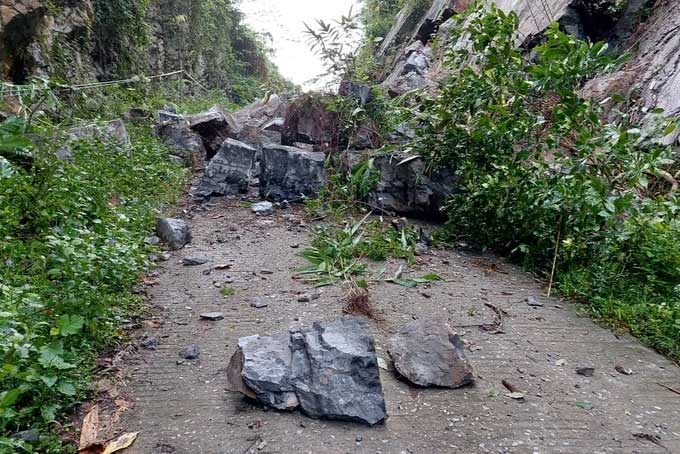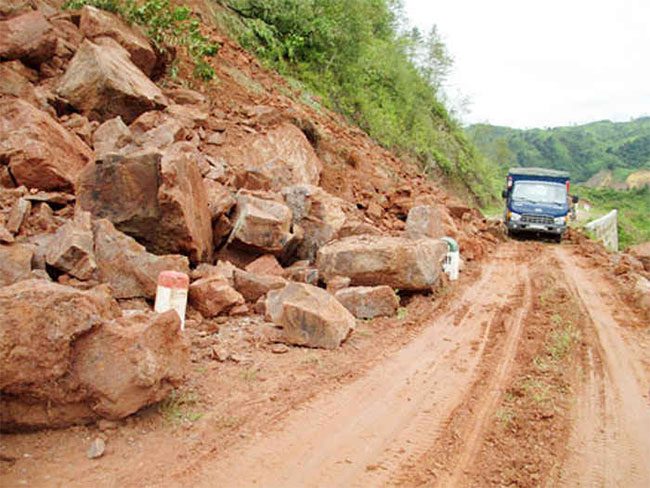Landslides are one of the natural disasters that frequently occur in the mountainous provinces of our country, capable of sweeping away or burying anything in their path as they descend from the slopes.
This is a dangerous phenomenon, and residents need to equip themselves with a few warning signs to minimize risks and damages to life and property.
How do landslides form?

The landslide incident occurred in Thượng Hóa commune, Minh Hóa district, Quảng Bình province. (Photo: Đ.T).
A landslide is the movement of a mass or boulders of various sizes, accompanied by a large amount of soil sliding down a slope from a mountainside or high hill.
The causes of landslides are numerous, particularly related to weather conditions such as prolonged heavy rain, snowmelt, stream erosion, changes in groundwater flow, earthquakes, and volcanic activity that lead to soil weathering (the process of breaking down soil, rock, and minerals).
In addition, human activities such as deforestation for timber, and land clearing for agriculture also contribute to the reduced stability of the soil and rocks on slopes.
The force of gravity pulls the landslide materials down the slope.
The movement of rocks during a landslide can be very rapid and sudden, especially during severe storms, or it can be slow enough that we may not immediately notice it (except for a few signs like cracks in the ground or subsidence on affected roads).
How to prevent a landslide
For families living on or below steep slopes, it is essential to regularly monitor news and weather forecasts. If there are warnings of prolonged rain or storms, it is crucial to assess whether you live in a landslide-prone area.

When driving near steep slopes in bad weather, be aware of signs of landslides.
Avoid activities that may increase ground instability. For example, avoid digging deep into a steep hill, building homes at the very top or bottom of a steep slope, or indiscriminately clearing forests…
Residents can learn to recognize the signs of an impending landslide, such as the appearance of cracks, bulges on slopes, unusual water flow down the slope, sudden changes in flow, and small rocks breaking off and falling.
Monitor rainwater drainage on slopes near your residence, especially in areas where water collects.
When driving near steep slopes in bad weather, pay attention to signs of landslides, particularly at the base of slopes. If there are signs of road subsidence and debris falling from the slope, these are indicators of a potential landslide.
Notably, erosion during landslides can lead to flash floods; therefore, when experiencing this phenomenon along with continued heavy rain, residents should have alternative precautionary measures, such as following news from local authorities and weather forecasts to enable timely evacuation or safeguarding valuable items in the home in case of flash floods.



















































